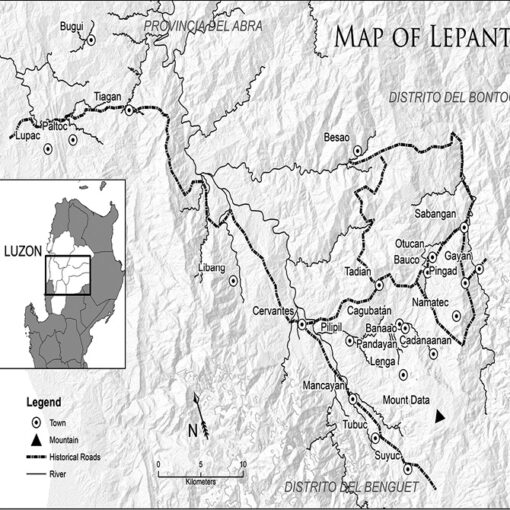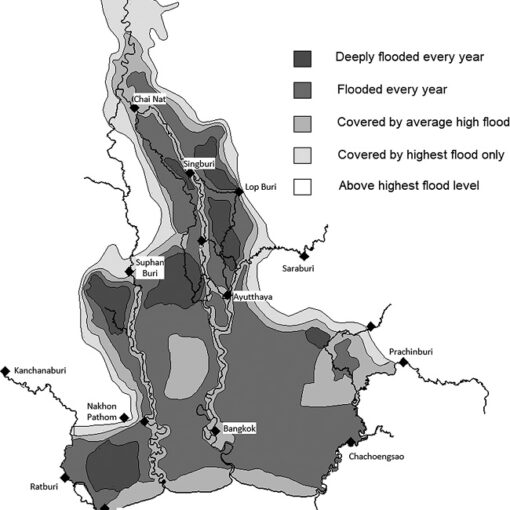Contents>> Vol. 10, No. 1
BOOK REVIEWS

Citizens, Civil Society and Heritage-Making in Asia
Hsin-Huang Michael Hsiao, Hui Yew-Foong, and Philippe Peycam, eds.
Singapore: ISEAS Publishing, 2017.
Citizens, Civil Society and Heritage-Making in Asia probes heritage-making and civil society movements in pivotal locations across Asia. Based on the contributors’ intensive research and closeness to people in diverse places, it provides a better understanding of Asia, particularly of societies and groups at the grassroots level and their identities. It makes a significant contribution to Critical Heritage Studies (CHS) by drawing attention to the creation of civil society through heritage-making analyses. Although CHS engages with similar themes and social levels, the sociological insights of this book into rarely studied sites and groups, along with other important themes such as complex politics, colonial and postcolonial memories, and kaleidoscopic tempi in Asia, make this volume unique.
Reflecting on preceding arguments of CHS, particularly the studies of David Harvey (2001) and Laurajane Smith (Chapter 2), Chapter 1 envisages heritage as an ongoing process or performance (thus, not an object or a place but a “verb”) of living people wherein they negotiate the significance of particular aspects of the past for their present concerns; and therefore, it is a potential guide to self-recognition. In Chapter 2 Smith discusses these points by summarizing post-1990 CHS arguments, including the impact of the Europe-centered notion of Authorized Heritage Discourse (AHD) on heritage-making worldwide. She also presents her recent theme, the politics of recognition, arguing that one’s self-recognition is (re)discovered through (re)interactions with things, sites, or spaces that become “heritage” in their own right. Heritage can be understood only through a detailed insight into individuals’ emotional and imaginary work that redirects them to redefine differences with others. This “politics,” however, differs from identity politics because it is separated from the manipulation of identity.
Although Smith discusses privatized recognition of Western selves, she presents an important foreground for the rest of the book, which is structured by heritage-making at different levels: (1) the national level and its relationship with international and local levels (Chapters 3, 4); (2) diverse players and groups at the local level (Chapters 5–8); (3) de-territorialized immigrant groups (Chapters 9, 10); and (4) different levels of people within a boundary (Chapters 11–14).
Chapters 3 and 4, overviewing official policies to nationalize heritage in Myanmar and Indonesia, respectively, argue that heritage-making is the concern not only of states but also of diverse inhabitants as well as academia, the private sector, and NGOs. The common theme of these chapters is that incorporating official efforts into the beautification-centered or Cartesian AHD for landscape preservation does not necessarily lead civil society to a common recognition of “our heritage.” This is also a vital theme in CHS. The Indonesian case alerts us to the difficulty in building heritage-based civil society empowerment as such efforts are rarely compatible with inhabitants’ economic and cultural concerns. In contrast, the AHD-based preservation in Yangon may bring colonial shadows into realization through a civil group; the post-2011 elitist urban preservation may reactivate economic and social differentiation among multiethnic residents, embodied during the British colonial period. The two studies, while examining multiple players’ voices, make one rethink the close relationship of postcolonial heritage-making with the AHD reminiscent of the colonial past.
The subsequent four chapters continue to discuss/suggest the failure of participatory heritage-making and the possibility of an alternative heritage. With a focus on the local level, Chapters 5, 6, and 7 portray heritage-making as emotional explorations into selves, which redefine immaterial traditions as heritage. Chapter 5 shows grassroots-level communities’ rediscovery of religious ceremonies as their heritage in post-Doi Moi Vietnam. By tracing experiences of socialist atheism in the North and South, people immerse themselves in conducting ceremonies together with kinsmen. This is done differently in each region. Using examples of two cultural villages in Malaysia that highlight minorities’ cultural practices through local and international middlemen, Chapter 6 discusses disenfranchisement of minorities in spaces where their lives are to be encouraged. Chapter 7 discusses the emotional process of rediscovering identities in heritage-making in the context of the Philippines. It uniquely points out that the tragic stories in regionally made films convey emotional messages to marginalized islanders. It also suggests that films can bridge borders between Manila and the peripheries, enabling them to exchange emotions at film festivals.
Chapter 8 provides a final example of local engagement in heritage-making, discussing contestation-laden landscape preservation and postcoloniality in Macau, which is a designated heritage site for its “blend of the East and the West.” However, Macau witnessed gentrification, infrastructural development, and reactivation of gambling under the official policy of localizing capital within Macau. Chinese-origin inhabitants support the preservation of landscape, although, as in the case of Yangon, the call to “blend with the West” may actually mask the shadow of the city’s colonial past. This civil protest is underpinned by the non-dichotomous self-recognition of postcolonial residents as citizens of a cosmopolitan city.
All subsequent chapters focus on examinations of Chinese people in diverse places. Chapters 9 and 10 examine groups of Chinese people who migrated to Myanmar and Singapore. Their ideas of authentic Chinese culture vary by place of birth and generation. The first generation, which moved cross-regionally, established heritage as beyond-descent assets, sharing experiences of crisscrossing an Asia that was already territorialized. Their offspring, however, conceptualize heritage by accessing extended networks covering Asia. Chapters 11 to 14 discuss the case of Taiwan. Chapter 11 outlines transformations of official policies related to heritage-making, including the first Japanese colonial ordinance and Taiwan’s hallmark Act of 1982 and its conceptualization of heritage as capital, while the other chapters show how officials and the public make and use heritage. Preservation or demolition and ways of commemorating objects, places, and time (i.e., ways of treating landscapes of the Japanese colonial period and the history of Taiwanese veterans) are decided in accordance with living people’s economic lives and sensibilities about health and beauty. Chapters 11–14 also contain arguments surrounding this book’s common theme, i.e., through heritage-making, people craft memories and self-recognition in the postcolonial present.
Thus, the multiple layers of discussion in this volume offer significant keys to understanding present-day Asia. However, a few points remain unexplored, for instance, the recognition of cultural diversity and differences between individuals and groups. If the politics of recognition entails recognition of differences, as suggested in the beginning, it is necessary to examine relationships of the focal groups with other groups and their ways of defining differences. In-depth examinations of the focal groups mask these points, particularly the analyses of the Chinese group networks. What kinds of emotions, sensibilities, or intimacy have (do) the Chinese groups or creative networks found (find) within their groups through interactions with non-Chinese groups? It should be noted that the microscopic scrutiny of the recognition of difference, which may be rewarding in terms of understanding cross-border movements, must be bound by the cultural perspective. Heritage-making, citizenship, and intimacy are culturally diverse processes. This means that a gender-based perspective is also important for further analyses. However, notwithstanding the abovementioned points, this book presents model studies not only for CHS but also for studies of civil society, memory, and postcoloniality in Asia.
Odajima Rie 小田島理絵
School of Arts and Sciences, Tokyo Woman’s Christian University
Reference
Harvey, David C. 2001. Heritage Pasts and Heritage Presents: Temporality, Meaning and the Scope of Heritage Studies. International Journal of Heritage Studies 7(4): 319–338.
DOI: doi.org/10.20495/seas.10.1_169



